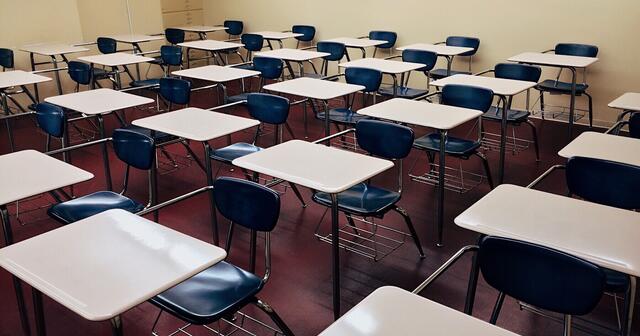

 By Molly Macek
By Molly Macek
Some education advocates and lawmakers claim smaller class sizes are the way to improve student performance in Michigan. But reducing the student-to-teacher ratio will do little beyond increasing costs for taxpayers. Other initiatives, notably those known to enhance teacher quality, will go further to improve student outcomes.
In a recent article, The Detroit News published class size data from 49 public schools — a sample that represents fewer than 2% of the public schools in Michigan. Of these, 27 have one or more classes with more than 30 students. The News article uses this datum to build a case for smaller class sizes.
But take a closer look at this small sample of schools and you’ll find no clear relationship between class size and school performance. Some schools in the sample that had no classes with more than 30 students received a failing grade on the Michigan Context and Performance Report Card, just released by the Mackinac Center for Public Policy.
Mackenzie Elementary Middle School in Detroit received an “F” although just two classes at the school have more than 30 students. At Ken-O-Sha Park Elementary in Grand Rapids, none of the classes had more than 24 students, but the school still received a “D” on the Mackinac Center report. Conversely, South Canton Scholars charter school earned an “A” although 12 classes have more than 30 students and half its population qualifies for the federal Free and Reduced Lunch program.
But many school officials say that smaller classes are key to improving student learning. “We know that lower class sizes can lead to stronger teacher retention rates, improved student behavior and student achievement," Nicholai Vitti, superintendent of Detroit’s public schools district, told The Detroit News. And Michael Rice, Michigan’s superintendent of public instruction, told the News that elementary school classes should have fewer than 30 students.
Expecting student learning to improve by simply reducing class sizes is shortsighted and lacks sufficient support from the research. A study by Caroline Hoxby, economics researcher at Stanford University, found reducing class size to fewer than 30 students in grades one through six had no effect on student achievement in reading, writing, or math. Other studies have produced mixed or inconclusive findings.
A policy of reducing class sizes has questionable effects on student achievement, but what is certain is that it will have unintended consequences. California, among several states, adopted a statewide class reduction law at a significant cost to taxpayers. The 1996 law required schools to hire thousands of new teachers, and it diluted the quality of the teacher workforce — especially in schools with more economically disadvantaged students.
In Michigan, the student-to-teacher ratio is declining as student enrollment drops. Currently, there’s one teacher for every 14 students on average, a ratio that calls into question the need for a law to make classes smaller. Yet, the Legislature has poured millions of taxpayer dollars into teacher recruitment programs to address an alleged shortage of teachers.
Hiring even more teachers to reduce the ratio by just two students – from 14:1 to 12:1 – would cost taxpayers more than $1 billion, assuming the average cost per teacher at $100,000 per year. And this estimate fails to account for the cost of the additional classrooms and infrastructure that would be needed to accommodate more and smaller classes.
The financial cost of hiring more teachers and building more classrooms is significant, but it’s not the only cost. There’s a cost to students, too. As a district hires more teachers, it dilutes the quality of the teacher pool. If there’s a cap on class size, students taught by a highly effective teacher in a class of 30 could get moved to a smaller class with a mediocre teacher.
Shrinking the numbers won’t, by itself, do anything to help students in a class of 30 learn more. Teachers would need to change their pedagogy and incorporate more evidence-based strategies into their instruction. That’s a challenge for even veteran teachers.
If the goal is to improve student performance, taxpayer dollars would be better spent on initiatives with a proven track record of doing just that. Education research suggests that teacher quality has a greater impact on student achievement than any other factor within a school’s control — including class size. Given this fact, policies that tie teacher effectiveness to personnel decisions (e.g., teacher retention, placement, compensation and layoffs) must be given priority if student achievement is the goal.
Requiring schools to reduce class size will do little to improve student outcomes and will pose a significant cost to taxpayers. Policies that prioritize teacher quality and accountability would save money and do more to promote student achievement than hiring more teachers.
Permission to reprint this blog post in whole or in part is hereby granted, provided that the author (or authors) and the Mackinac Center for Public Policy are properly cited.
Get insightful commentary and the most reliable research on Michigan issues sent straight to your inbox.

The Mackinac Center for Public Policy is a nonprofit research and educational institute that advances the principles of free markets and limited government. Through our research and education programs, we challenge government overreach and advocate for a free-market approach to public policy that frees people to realize their potential and dreams.
Please consider contributing to our work to advance a freer and more prosperous state.

Donate | About | Blog | Pressroom | Publications | Careers | Site Map | Email Signup | Contact